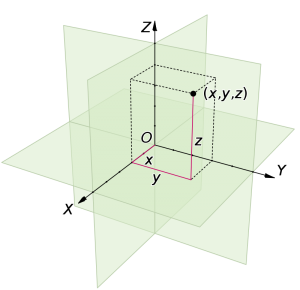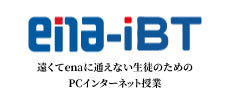口語的か、形式的か、現代英語的か―that is the question.
前回と前々回のブログ記事においてIdiomがらみのparaphraseについて説明しましたが、今回はIdiomatic expressionsを学んで用いる際の注意点に関する記事となります。
(Idiomに限ったことではないのですが、)使用するIdiomが「話し言葉的か」「書き言葉的か」「くだけた表現か」「かしこまった表現か」の違い―言語学で言うところのregister(使用域)―に対する識別力が実際に英語を使用する段階で必要となってきます。(x軸とy軸からなる座標平面をイメージしてみましょう。)さらに言えば、「現代英語的か(現在用いられているか)」「廃(すた)れた、または廃れかかっているか」の識別も必要です。(z軸も加えた3次元座標空間のイメージになってきますね。)そうすると、以下のイメージのように8つの領域【=数学用語では象限(しょうげん)】に分かれることになりますが、書き言葉でも話し言葉でもあるという使用域も当然ありますので、境界は明確ではなく、複数の領域にまたがることもあります。
このブログ記事を読んでいる方は自らの英語力を高めようという向学心のある方だと思いますが、英語表現を学ぶ際、それが上記のどの領域に属するものなのかを確認する意識を持つようにしていただければと思います。(確認方法としては、Internet resourcesを活用したり、英語の先生やネイティブの知り合いに聞いたりしてみることが考えられます。)
さて、ここからは前々回のブログ記事スタイルで生成AIとの協働記事としますので、以下の英語記事をもって更なる説明に代えさせていただきます。なお、校閲済みなので安心してお読みいただけます。
Navigating the Nuances of Idiomatic Expressions: Formal vs. Informal Usage
Idiomatic expressions are the vibrant threads that weave through the fabric of language(←メタファーですね!), adding depth and texture to communication. However, not all idioms are created equal, and understanding when to deploy (←色付き太字で知らない単語は辞書チェック!)formal or informal idiomatic expressions is crucial for effective communication. In this article, we’ll explore the nuances of formal and informal idiomatic usage and the importance of awareness in choosing the right expression for the context.
Formal Idiomatic Expressions:
Formal idiomatic expressions are often employed in written communication, academic discourse, and professional settings. These expressions adhere to standard grammar and syntax, lending a polished and authoritative tone to the language.
Examples of Formal Idiomatic Expressions:
in light of, on the contrary, with regard to
Usage Scenarios for Formal Idiomatic Expressions:
1. Academic Writing: In scholarly papers, formal idiomatic expressions contribute to clarity and precision, elevating the discourse and adhering to academic conventions.
2. Business Correspondence: Formal idiomatic expressions convey professionalism and respect in emails, reports, and formal letters, enhancing credibility and fostering a sense of decorum.
3. Legal Documents: In legal contexts, formal idiomatic expressions ensure accuracy and specificity, mitigating ambiguity and facilitating legal interpretation.
Informal Idiomatic Expressions:
Informal idiomatic expressions, on the other hand, are characteristic of spoken language and casual communication. These expressions often deviate from standard grammar rules and reflect the spontaneity and familiarity of everyday speech.
Examples of Informal Idiomatic Expressions:
piece of cake, hang in there, hit the hay
Usage Scenarios for Informal Idiomatic Expressions:
1. Conversational Settings: Informal idiomatic expressions add warmth and authenticity to conversations among friends, family, and peers, fostering rapport and camaraderie.
2. Social Media: In online interactions, informal idiomatic expressions enhance engagement and relatability, contributing to a casual and conversational tone.
3. Personal Correspondence: Informal idiomatic expressions lend a personal touch to emails, text messages, and informal letters, conveying familiarity and intimacy.
The Importance of Awareness in Usage:
Understanding the nuances of formal and informal idiomatic expressions is essential for effective communication. Awareness of the context, audience, and purpose of communication enables speakers and writers to choose the most appropriate expression for the situation, whether formal or informal. By mastering the art of idiomatic usage, individuals can navigate the intricacies of language with confidence and finesse, enriching communication and fostering meaningful connections.
In conclusion, formal and informal idiomatic expressions each have their unique roles and usage scenarios. By cultivating awareness of when to deploy formal or informal idiomatic expressions, communicators can tailor their language to suit the context and effectively convey their message with clarity, authenticity, and impact.
校閲・文責:片野
○月別アーカイブ
- ≫2024年5月
- ≫2024年4月
- ≫2024年3月
- ≫2024年2月
- ≫2024年1月
- ≫2023年12月
- ≫2023年11月
- ≫2023年10月
- ≫2023年9月
- ≫2023年8月
- ≫2023年7月
- ≫2023年6月
- ≫2023年5月
- ≫2023年4月
- ≫2023年3月
- ≫2023年2月
- ≫2023年1月
- ≫2022年12月
- ≫2022年11月
- ≫2022年10月
- ≫2022年9月
- ≫2022年8月
- ≫2022年7月
- ≫2022年6月
- ≫2022年5月
- ≫2022年4月
- ≫2022年3月
- ≫2022年2月
- ≫2022年1月
- ≫2021年12月
- ≫2021年11月
- ≫2021年10月
- ≫2021年9月
- ≫2021年8月
- ≫2021年7月
- ≫2021年6月
- ≫2021年5月
- ≫2021年4月
- ≫2021年3月
- ≫2021年2月
- ≫2021年1月
- ≫2020年12月
- ≫2020年11月
- ≫2020年10月
- ≫2020年9月
- ≫2020年8月
- ≫2020年7月
- ≫2020年6月
- ≫2020年5月
- ≫2020年4月
- ≫2020年3月
- ≫2020年2月
- ≫2020年1月
- ≫2019年12月
- ≫2019年11月
- ≫2019年10月
- ≫2019年9月
- ≫2019年8月
- ≫2019年7月
- ≫2019年6月
- ≫2019年5月
- ≫2019年4月
- ≫2019年3月
- ≫2019年2月
- ≫2019年1月
- ≫2018年12月
- ≫2018年11月
- ≫2018年10月
- ≫2018年9月
- ≫2018年8月
- ≫2018年7月
- ≫2018年6月
- ≫2018年5月
- ≫2018年4月
- ≫2018年3月
- ≫2018年2月
- ≫2018年1月
- ≫2017年12月
- ≫2017年11月
- ≫2017年10月
- ≫2017年9月
- ≫2017年8月
- ≫2017年7月
- ≫2017年6月
- ≫2017年5月
- ≫2017年4月
- ≫2017年3月
- ≫2017年2月
- ≫2017年1月
- ≫2016年12月
- ≫2016年11月
- ≫2016年10月
- ≫2016年9月
- ≫2016年8月
- ≫2016年7月
- ≫2016年6月
- ≫2016年5月
- ≫2016年4月
- ≫2016年3月
- ≫2016年2月
- ≫2016年1月
- ≫2015年12月
- ≫2015年11月
- ≫2015年10月
- ≫2015年9月
- ≫2015年8月
- ≫2015年7月
- ≫2015年6月
- ≫2015年5月
- ≫2015年4月
- ≫2015年3月
- ≫2015年2月
- ≫2015年1月
- ≫2014年12月
- ≫2014年11月
- ≫2014年10月
- ≫2014年9月
- ≫2014年8月
- ≫2014年7月
- ≫2014年6月
- ≫2014年5月
- ≫2014年4月
- ≫2014年3月
- ≫2014年2月
- ≫2014年1月
- ≫2013年12月
- ≫2013年11月
- ≫2013年10月
- ≫2013年9月
- ≫2013年8月
- ≫2013年7月
- ≫2013年6月
- ≫2013年5月
- ≫2013年4月
- ≫2013年3月
- ≫2013年2月
- ≫2013年1月
- ≫2012年12月
- ≫2012年10月
- ≫2012年9月
- ≫2012年8月
- ≫2012年7月
- ≫2012年6月
- ≫2012年5月
- ≫2012年4月
- ≫2011年11月
- ≫2011年7月
- ≫2011年6月
- ≫2011年5月
- ≫2011年2月
- ≫2010年6月
- ≫2009年6月
- ≫2008年6月
- ≫2007年6月
- ≫2006年6月






















